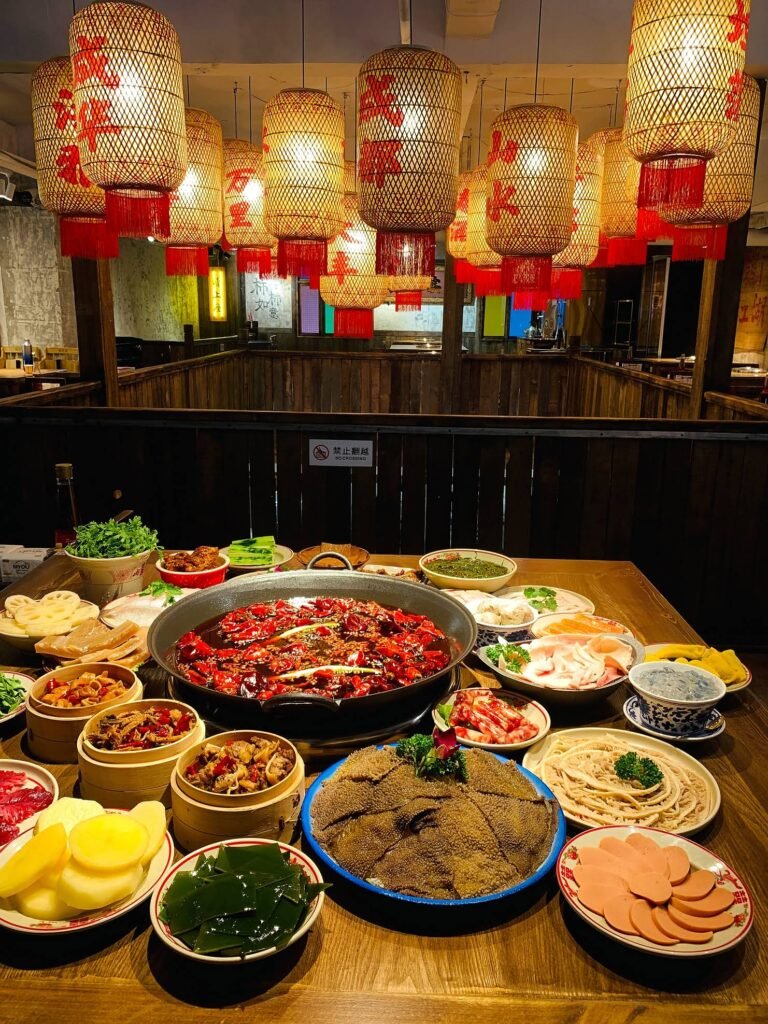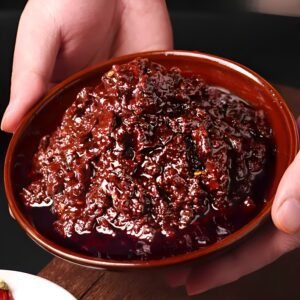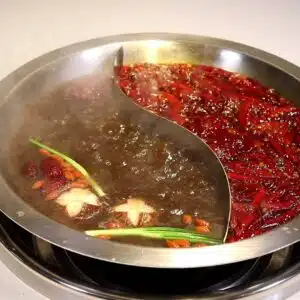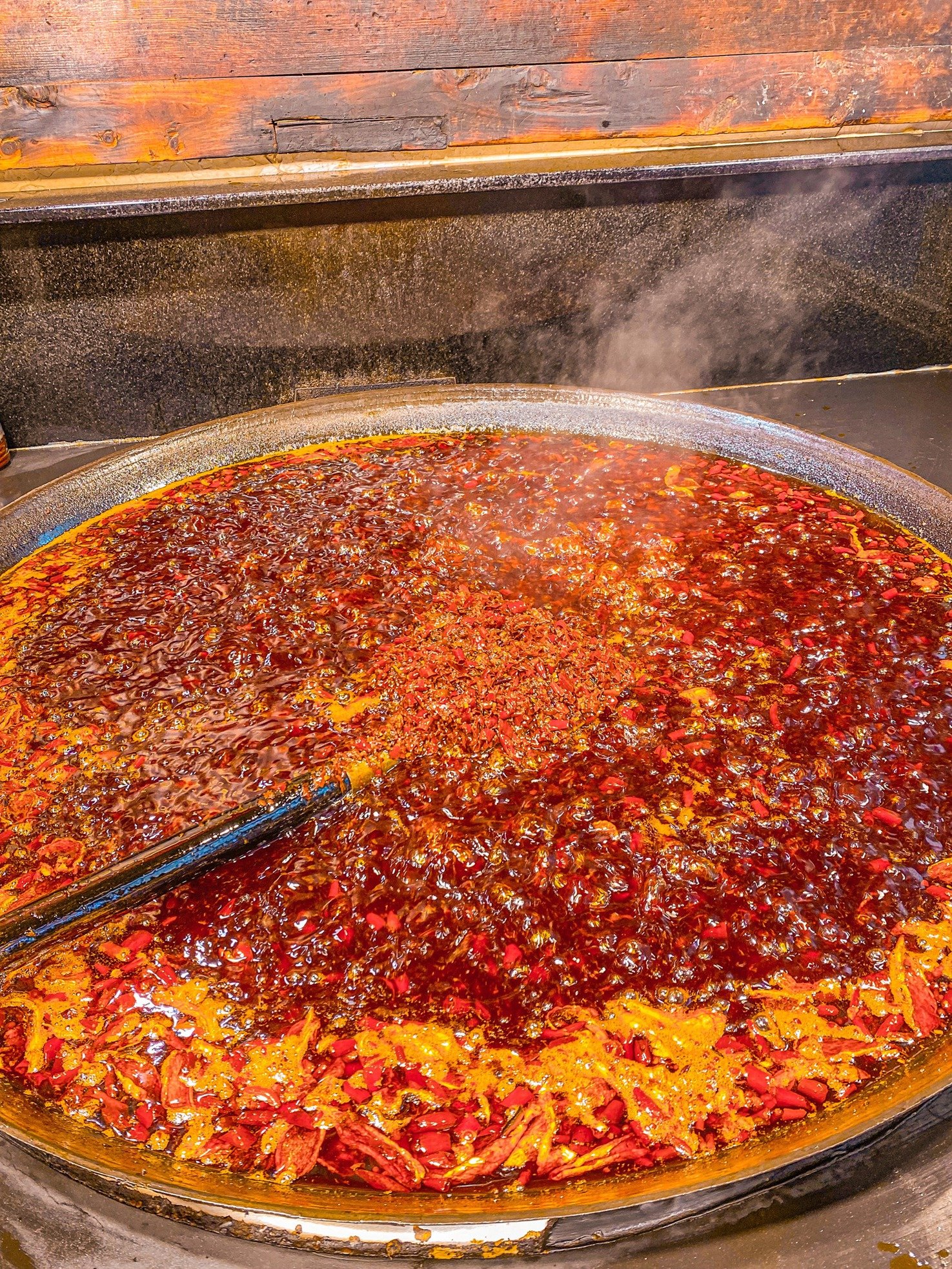My name is Huang Jin, how do hot pot restaurants work and the rhythm of bubbling broth is the soundtrack of my life. As founder of a Sichuan hot pot base factory in Guanghan, I’ve spent 10 years partnering with restaurant owners worldwide. Let me pull back the curtain on how hot pot restaurants work—from setup to daily operations—and why your base choice makes or breaks the business.

Why Hot Pot Dominates the Dining Scene
Periuk panas isn’t just a meal; it’s a social engine. Industry data reveals its unique advantages:
- Personalization Power: Diners craft their own experience with 50+ ingredient choices.
- Health Perception: Fresh ingredients cooked tableside align with modern dining trends.
- Operational Efficiency: No chefs needed—standardized broths and prep reduce labor costs.
“Sichuan-style hot pot alone commands 64% of China’s hot pot market, with premium segments growing fastest as urbanization increases.
Launching Your Hot Pot Restaurant: A 5-Step Roadmap
1. Concept & Audience Alignment
- Regional Focus: Will you specialize in Sichuan mala (like 70% of successful shops), or offer multi-broth options (tomato, mushroom, clear)?
- Price Positioning: Mid-to-high-end markets show strongest growth. Premium ingredients (e.g., hand-sliced lamb, live seafood) justify higher pricing.
2. Space & Equipment Design
- Ventilation Systems: Critical for spicy broths. Invest in industrial hoods with ≥1,500 CFM airflow.
- Table Engineering: Each table needs:
- Induction/electric hob (2,400W+ for rapid boiling)
- Central dividers for dual-flavor pots
- Oil-drainage grooves for grill combos
3. Ingredient Sourcing & Menu Engineering
- Core Proteins: Lamb (5 premium cuts only), beef ribeye, pork belly
- Signature Items: Include “experience” ingredients like duck intestine, beef tripe, or live shrimp.
- Dipping Bar: 15+ condiments (coriander, garlic paste, sesame sauce) for customization.
4. Broth Selection: Your Flavor Foundation
This is where how hot pot restaurants work hinges on strategic decisions:
| Broth Type | Customer Appeal | Operational Note |
|---|---|---|
| Sichuan Mala | Authenticity seekers (64% market) | Requires high-quality tallow & Sichuan peppercorns |
| Tomato | Health-conscious groups | Balance acidity with rock sugar |
| Mushroom | Vegetarian/vegan diners | Use vegetable base + dried shiitake |
5. Staff Training & Service Flow
- 5-Minute Rule: Staff must deliver broths to boiling within 5 minutes of seating.
- Ingredient Storytelling: Train servers to explain rare items (e.g., “This beef tripe needs 15-second swirl”).

The Unseen Hero: Why Your Hot Pot Base Defines Success
Your broth isn’t just flavor—it’s your operational backbone. As a base producer, I emphasize three non-negotiables:
Consistency Across Batches
Commercial bases must perform identically every time—unlike homemade versions. Our factory uses HPLC testing to guarantee stable capsaicin levels.
Supply Chain Resilience
A single restaurant uses 50-10000kg of base monthly. Verify your supplier’s:
Export certifications (FDA)
Minimum order quantities (MOQs)
Backup production capacity
Zero-Additive Innovation
68% of diners now prefer clean-label broths. Our zero-additive series (inspired by industry leaders like Yihai) uses:
Natural preservatives (fermented rice wine)
Umami from shiitake mushrooms instead of MSG
“The sauce is composed of more than ten seasonings—the proportion is a restaurant’s commercial secret.

Daily Operations: Mastering the Simmer
How hot pot restaurants work day-to-day involves precision:
Broth Management:
Dilution ratios: 1:1 (hotpot base:water) for optimal flavor
Never reuse broth—discard after each service
Ingredient Waste Control:
Use QR code ordering to track real-time consumption
Freeze sliced meats in 100g portions
Customer Experience:
Teach “dip timing” cards (e.g., “Lamb: 8 seconds”)
Offer spice-level customization (side chili oil/Sichuan pepper paste)
Why Partner with hot pot seasoning factory?
At our guanghan facility, we engineer bases for restaurant realities:
Authentic Sichuan Core:
Aged Pixian doubanjiang (3+ years)
Hongyuan peppercorns for balanced mala
Operational Advantages:
18-month ambient shelf life
Custom spice levels (e.g., “Export Mild” for Western palates)
Compliant products:
Authentic traditional Chinese seasonings
Making food is being conscientious
“A great hot pot isn’t just food—it’s shared joy. Our base is the silent conductor of that joy.”
Summary :how do hot pot restaurants work
Running a hotpot restaurant is a systematic project, and we have 13 years of experience in hotpot restaurant management. Welcome to exchange and explore the skills of hotpot restaurant management with us.
Here are the products from our hotpot seasoning factory. If you are interested, please feel free to kenalan us.
We are a supplier of periuk panas base seasonings from China. We mainly provide Chinese cuisine seasonings to hot pot restaurants around the world. We have the most authentic Sichuan hot pot base, tomato hot pot base, mushroom hot pot base and pickled cabbage hot pot base. The most distinctive feature of the hot pot base seasonings in our family is that they are all made according to the standards of restaurant products. In this way, you can taste the flavor of Sichuan.






